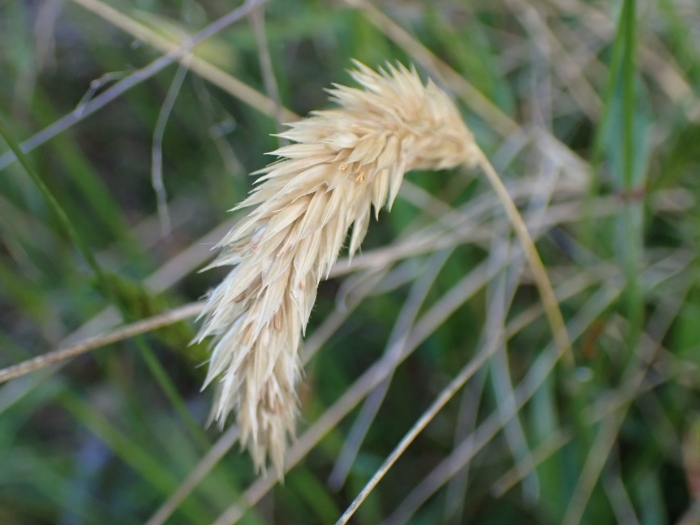Sweet Vernal Grass
(Anthoxanthum odoratum)
Sweet Vernal Grass (Anthoxanthum odoratum)
/
/

© giantcicada
CC BY 4.0
Image By:
© giantcicada
Recorded By:
Copyright:
CC BY 4.0
Copyright Notice:
Photo by: © giantcicada | License Type: CC BY 4.0 | License URL: http://creativecommons.org/licenses/by/4.0/ | Uploader: giantcicada | Publisher: iNaturalist |



















Estimated Native Range
Summary
Anthoxanthum odoratum, commonly known as sweet vernal grass, is a short-lived perennial herb native to grasslands and open woodlands across Eurasia and northern Africa. It typically grows up to 28 inches tall and forms dense tufts of narrow, green leaves. The plant is known for its sweet-smelling flowers that emit the fragrance of fresh hay due to the presence of coumarin, especially when dried. Flowering occurs in late spring to early summer, and the flowers are not particularly showy but are valued for their scent. Sweet vernal grass is often used in meadow mixtures and for its ability to grow in poor soils.
Sweet vernal grass is appreciated for its aromatic contribution to hay and forage, and it is sometimes included in lawn seed mixes for its fragrance when cut. It is also used in traditional medicine and perfumery. In cultivation, it requires low maintenance, tolerating a range of soil types, though it prefers moist, well-drained soils. It can grow in full sun to part shade. While generally not a problem plant, it can become invasive outside its native range, and its pollen is a significant contributor to hay fever. Gardeners should check local regulations before planting, as it is considered invasive in some regions.CC BY-SA 4.0
Sweet vernal grass is appreciated for its aromatic contribution to hay and forage, and it is sometimes included in lawn seed mixes for its fragrance when cut. It is also used in traditional medicine and perfumery. In cultivation, it requires low maintenance, tolerating a range of soil types, though it prefers moist, well-drained soils. It can grow in full sun to part shade. While generally not a problem plant, it can become invasive outside its native range, and its pollen is a significant contributor to hay fever. Gardeners should check local regulations before planting, as it is considered invasive in some regions.CC BY-SA 4.0
Plant Description
- Plant Type: Grass
- Height: 1-3 feet
- Width: 1-2 feet
- Growth Rate: Moderate
- Flower Color: N/A
- Flowering Season: Spring, Summer
- Leaf Retention: Deciduous
Growth Requirements
- Sun: Full Sun, Part Shade
- Water: Medium
- Drainage: Fast, Medium, Slow
Common Uses
Deer Resistant, Erosion Control, Fragrant, Low Maintenance, Rabbit Resistant
Natural Habitat
Grasslands and open woodlands across Eurasia and northern Africa
Other Names
Common Names: Sweet Vernal Grass, Vanilla Grass, Holy Grass, Buffalo Grass
Scientific Names: , Anthoxanthum odoratum, Anthoxanthum alpinum, Anthoxanthum asperum, Anthoxanthum asperum, Anthoxanthum nebrodense, Anthoxanthum odoratum f. effusum, Anthoxanthum odoratum f. formosum van, Anthoxanthum odoratum f. glabrum, Anthoxanthum odoratum f. interruptum
GBIF Accepted Name: